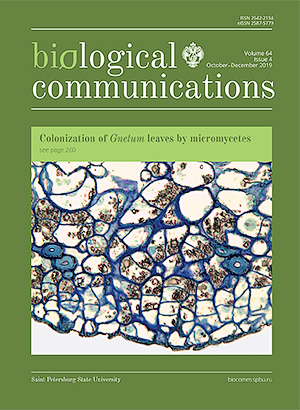Trends in development of diatom flora from sub-recent lake sediments of the Lake Bolshoy Kharbey (Bolshezemelskaya tundra, Russia)
DOI:
https://doi.org/10.21638/spbu03.2019.403Abstract
We studied diatom assemblages of the proglacial arctic lake Bolshoy Kharbey (Bolshezemelskaya tundra, Russian Arctic) from a short sediments core covering the last ca. 200 years. In total, 121 taxa from 2 classes, 5 orders, 18 families, and 50 genera were identified. The diatom flora included species with mainly cosmopolitan distribution. The assemblages were dominated by alkaliphilic benthic diatoms preferring standing — flowing waters, indifferent to salinity and moderate temperature conditions. The main changes in diatom assemblages took place in ca. 1870 and 1980. After 1870, which can be attributed to the end of the Little Ice Age, the species richness rose, especially of planktonic centric and small penate diatoms. This rise of diatom diversity took place most probably in response to climate warming, related to it prolongation of the growing season and period of open water. A negative trend in the evenness of the diatom assemblages during the last decades can be seen as an early-warning signal indicating a decrease of stability of the lake ecosystem.
Keywords:
diatoms, Lake Bolshoy Kharbey, Russian Arctic, climate change
Downloads
References
Downloads
Published
How to Cite
Issue
Section
License
Articles of Biological Communications are open access distributed under the terms of the License Agreement with Saint Petersburg State University, which permits to the authors unrestricted distribution and self-archiving free of charge.





